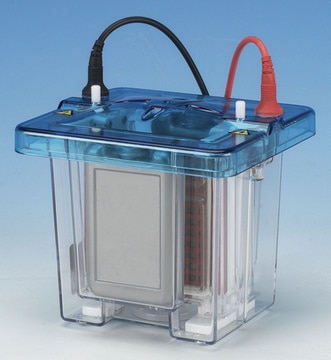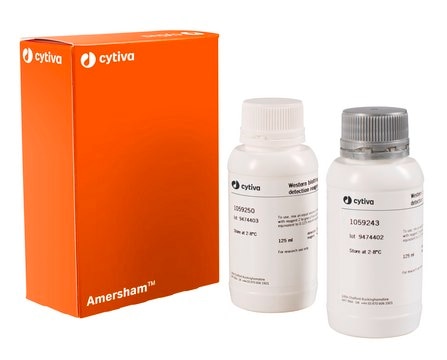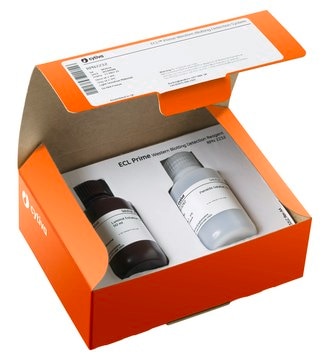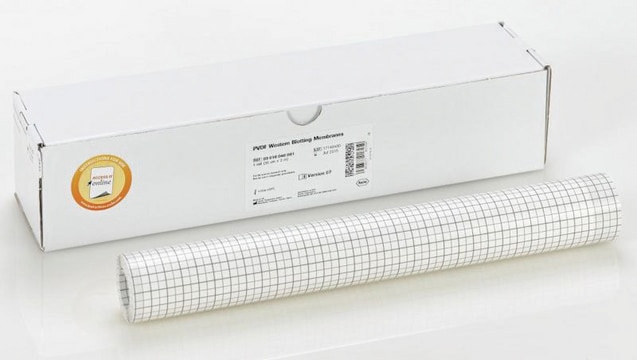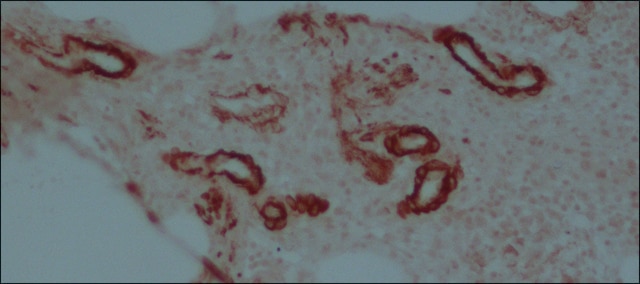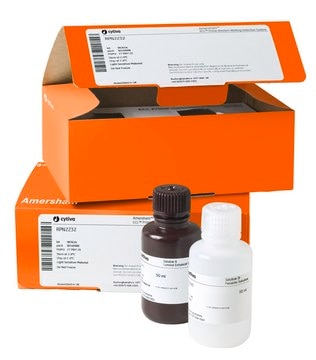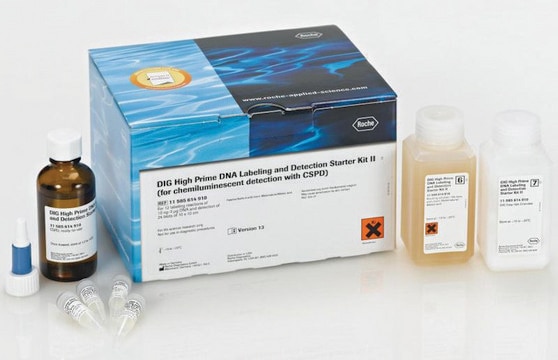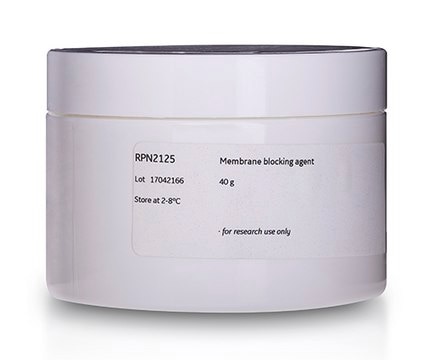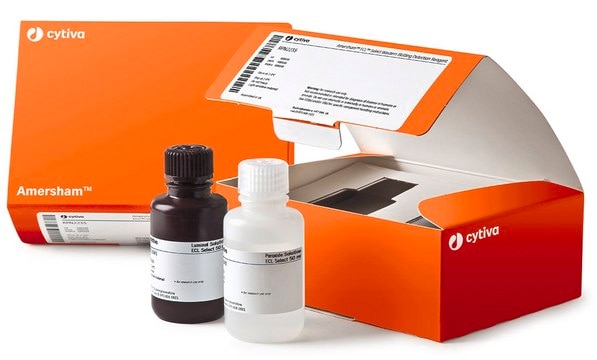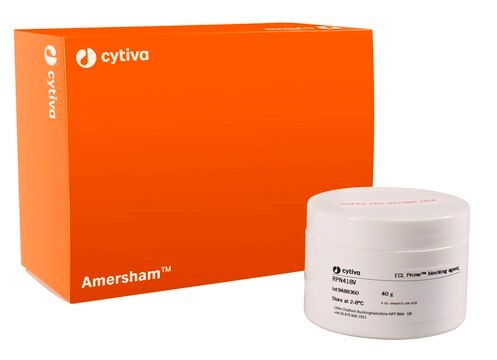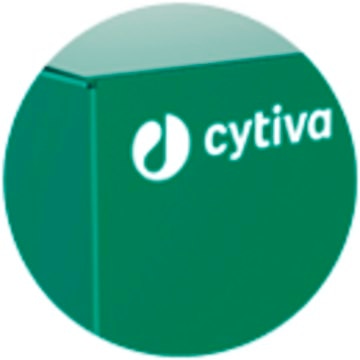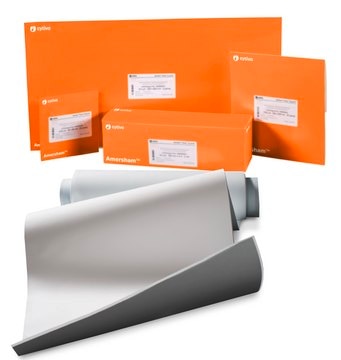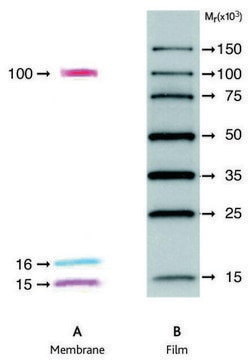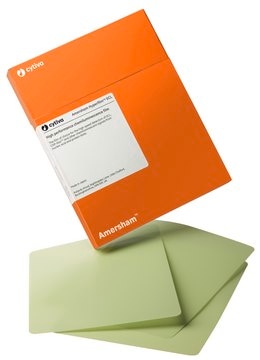GERPN2108
ECL™ Western Blotting Analysis System
Cytiva RPN2108
Sign Into View Organizational & Contract Pricing
All Photos(1)
About This Item
UNSPSC Code:
41105332
NACRES:
NA.32
Recommended Products
description
Detection reagent 1: Colorless Detection reagent 2: Colorless Peroxidase labelled anti-mouse antibody: Colorless Peroxidase labelled anti-rabbit antibody: Colorless Blocking agent: White
feature
wetted part: no
packaging
pkg of 1 kit
manufacturer/tradename
Cytiva RPN2108
storage temp.
2-8°C
Related Categories
General description
ECL™ Western Blotting System is the world′s most widely used and referenced chemiluminescent immunodetection system.
ECL™ Western Blotting System uses horseradish peroxidase (HRP) conjugated anti-mouse and anti-rabbit antibodies for luminol-based detection of Western blots. Blots probed with mouse or rabbit primary antibodies are incubated with HRP-conjugated secondary antibodies. Addition of ECL™ Detection Reagents results in a chemiluminescent signal that can be captured on film or detected with a CCD camera.
Each system contains the following reagents, sufficient for detection of 1000 cm2 membrane:
Anti-mouse HRP conjugate, 100 μl
Anti-rabbit HRP conjugate, 100 μl
ECL™ Detection Reagents 1 and 2, 62.5 mL each
Blocking agent, 5 g.
ECL™ Western Blotting System uses horseradish peroxidase (HRP) conjugated anti-mouse and anti-rabbit antibodies for luminol-based detection of Western blots. Blots probed with mouse or rabbit primary antibodies are incubated with HRP-conjugated secondary antibodies. Addition of ECL™ Detection Reagents results in a chemiluminescent signal that can be captured on film or detected with a CCD camera.
Each system contains the following reagents, sufficient for detection of 1000 cm2 membrane:
Anti-mouse HRP conjugate, 100 μl
Anti-rabbit HRP conjugate, 100 μl
ECL™ Detection Reagents 1 and 2, 62.5 mL each
Blocking agent, 5 g.
Application
ECL™ Blotting Analysis System has been used in western blotting.
Western Blotting
Features and Benefits
- Detection of mouse and rabbit primary antibodies on western blots using HRP-conjugated secondary antibodies and ECL™ reagents.
- Optimized system provides rapid, sensitive results using simple protocols.
- Designed for use with nitrocellulose and PVDF membranes.
- High sensitivity: Up to 10 times more sensitive than colorimetric methods.
- Rapid: Results can be rapidly obtained on X-ray film, providing hard copy data and avoiding fading associated with colorimetric detection methods.
- Easy reprobing: Save time and materials by reprobing on membranes up to 10 times.
- Quantifiable: Linear response in the range 0.2 to 2 OD units using pre-flashed Hyperfilm ECL,
- Non-radioactive-no specialized facilities needed
- Proven performance-the most widely referenced chemiluminescent detection method with hundreds of publications worldwide
Storage and Stability
Please be aware this product may be shipped 90 days before the expiration date. For more information on the batch specific expiration date, please contact technical service.
Analysis Note
To view the Certificate of Analysis for this product, please visit www.cytiva.com.
Legal Information
ECL is a trademark of Cytiva
signalword
Warning
hcodes
Certificates of Analysis (COA)
Search for Certificates of Analysis (COA) by entering the products Lot/Batch Number. Lot and Batch Numbers can be found on a product’s label following the words ‘Lot’ or ‘Batch’.
Already Own This Product?
Find documentation for the products that you have recently purchased in the Document Library.
Customers Also Viewed
Marie-Theres Zeuner et al.
Biochimica et biophysica acta, 1863(12), 3084-3095 (2016-11-05)
A distinct feature of the Toll-like receptor 4 (TLR4) is its ability to trigger both MyD88-dependent and MyD88-independent signalling, culminating in activation of pro-inflammatory NF-κB and/or the antiviral IRF3. Although TLR4 agonists (lipopolysaccharides; LPSs) derived from different bacterial species have
Our team of scientists has experience in all areas of research including Life Science, Material Science, Chemical Synthesis, Chromatography, Analytical and many others.
Contact Technical Service